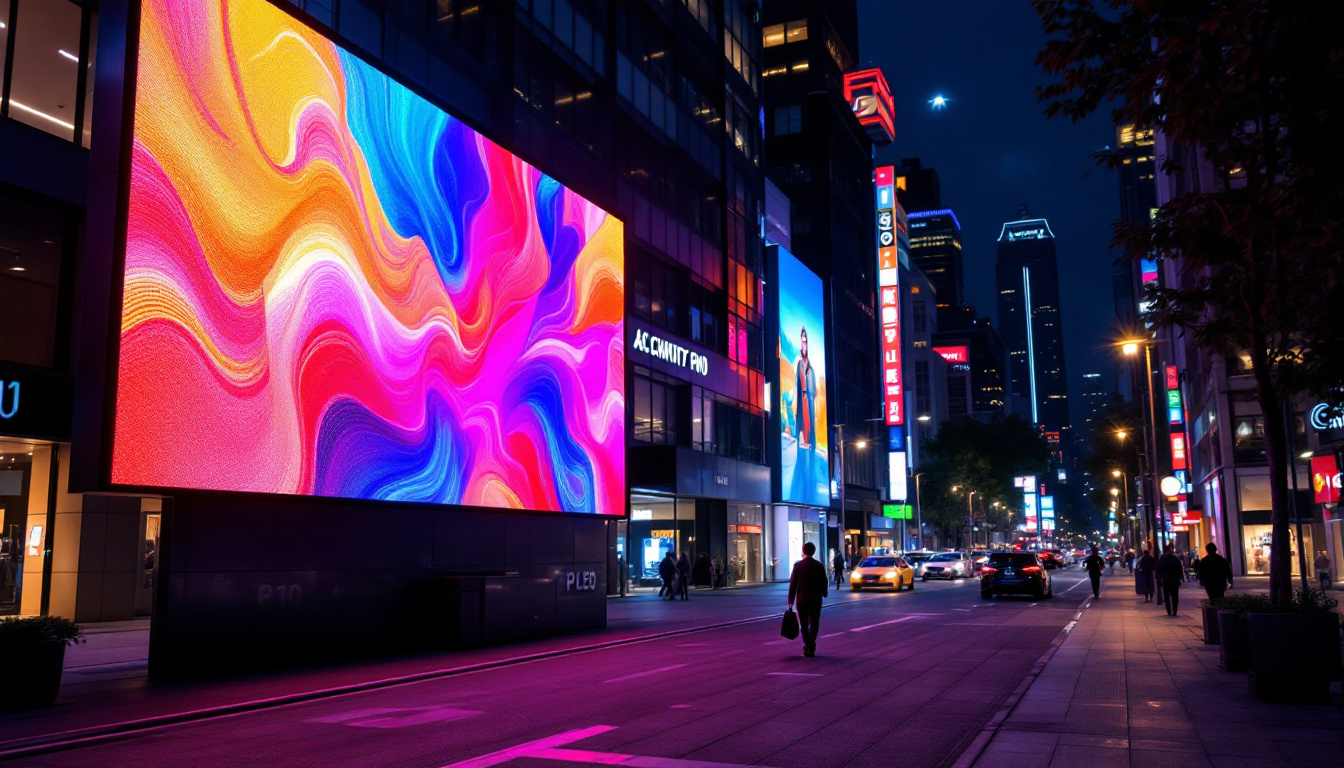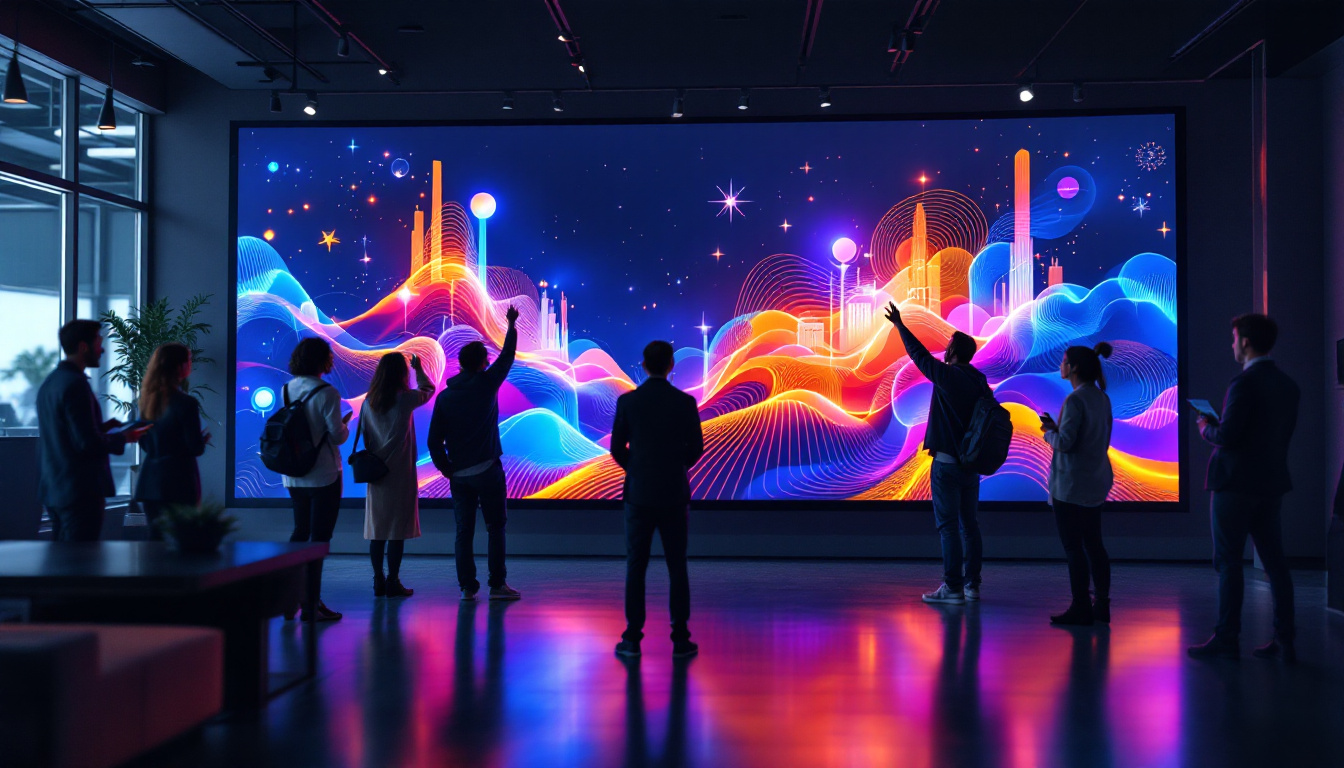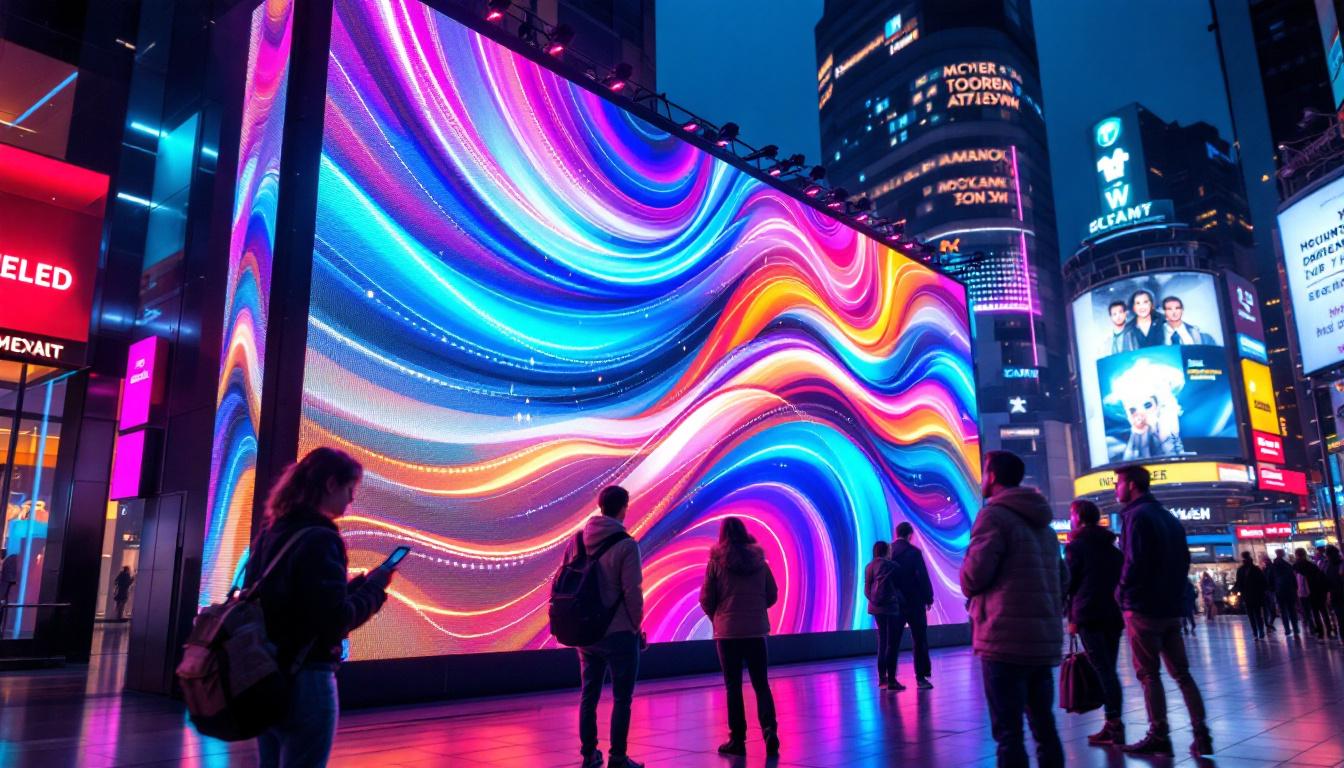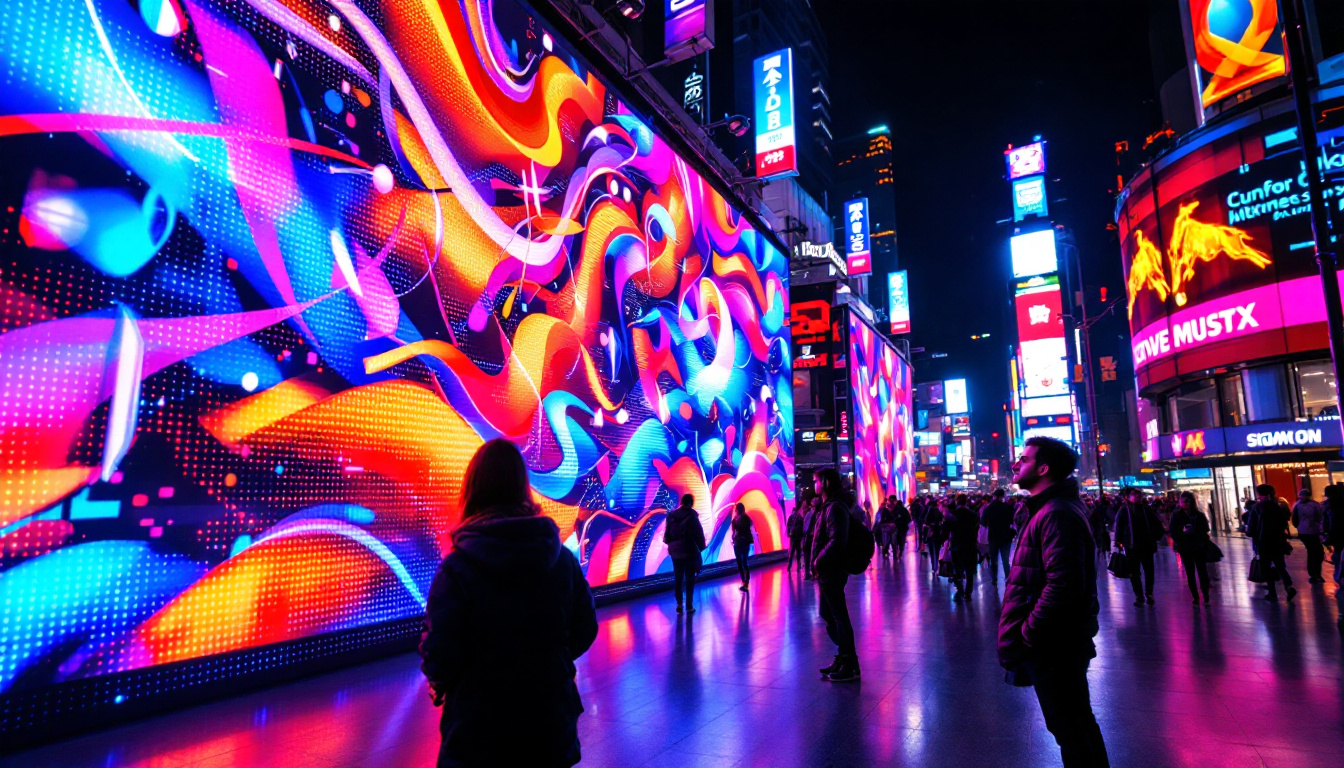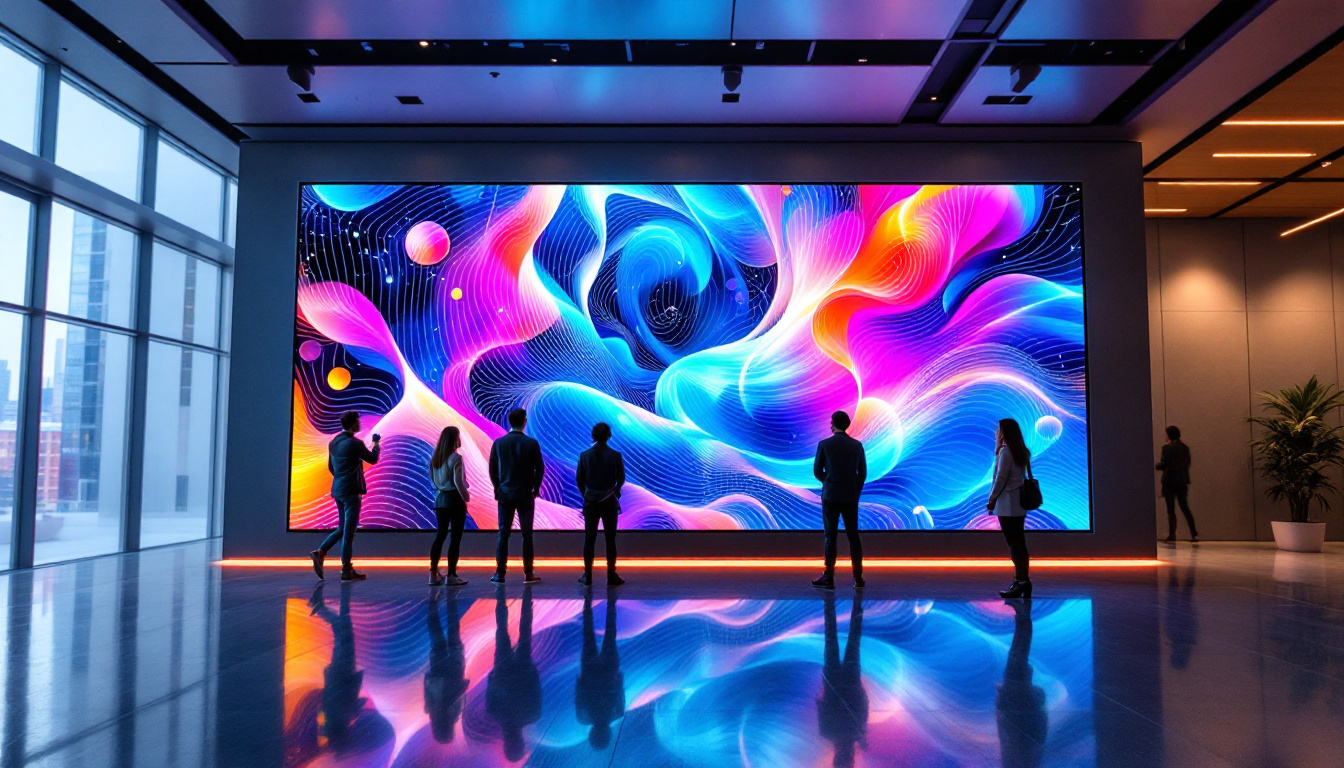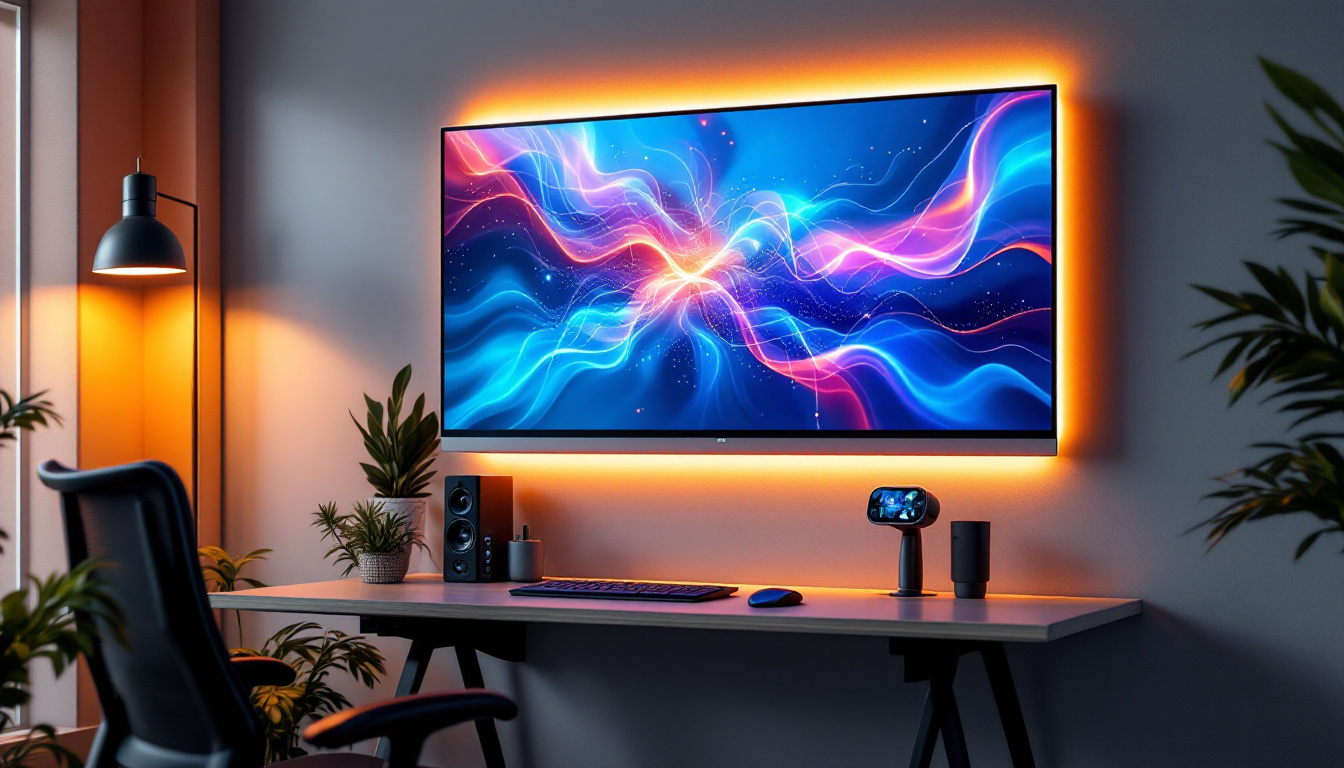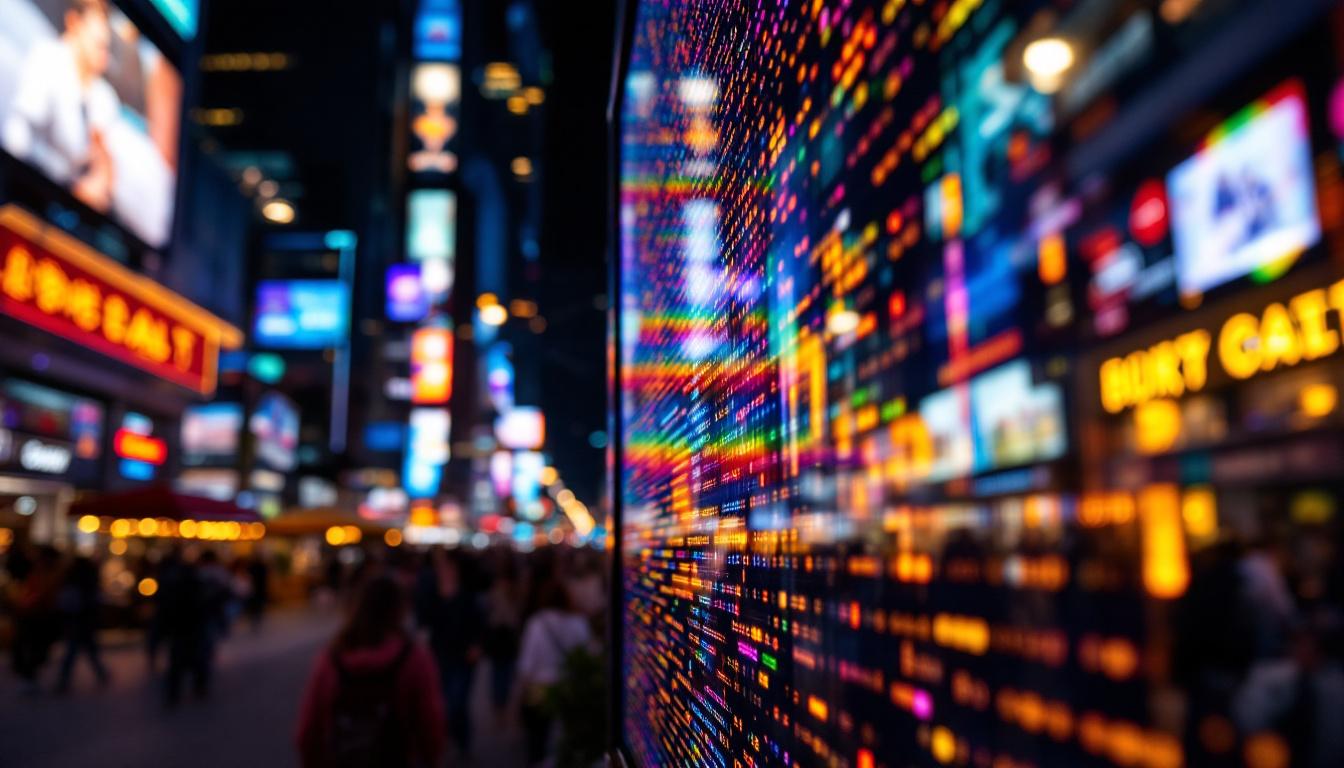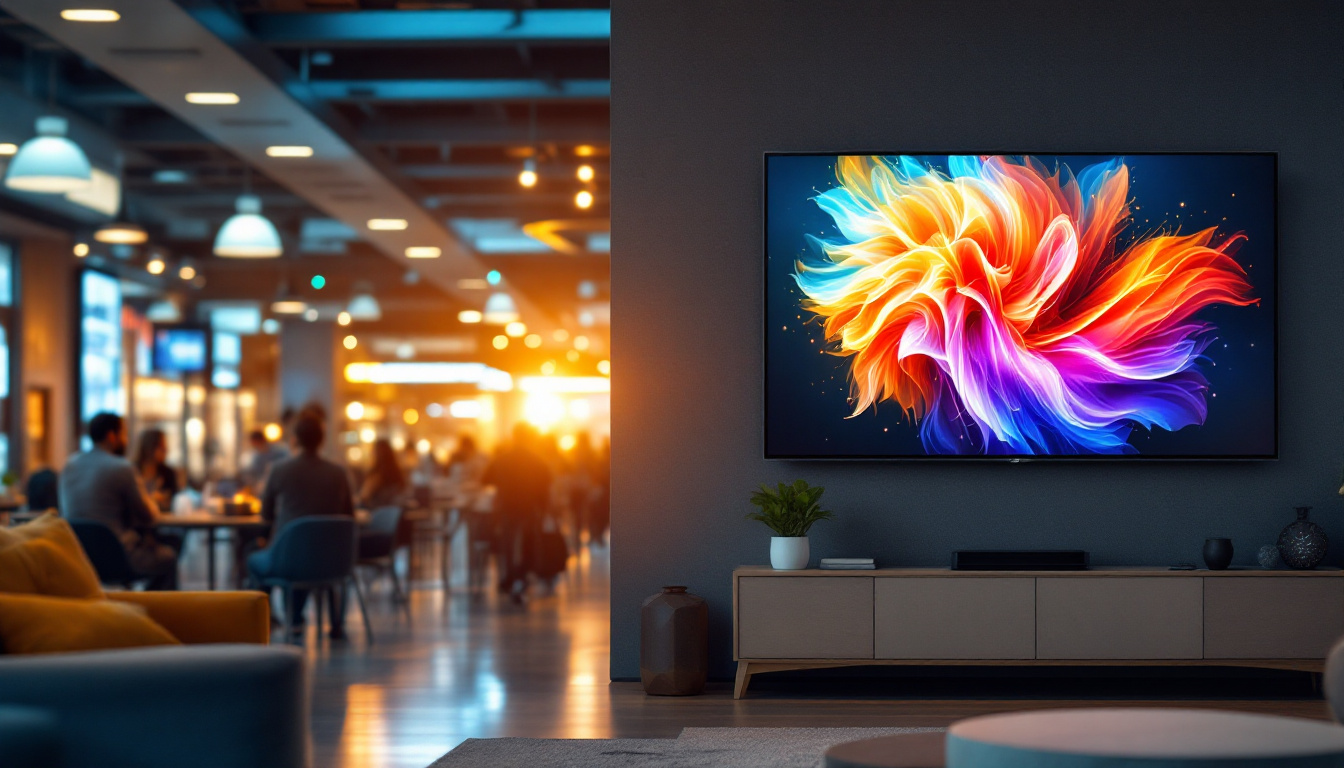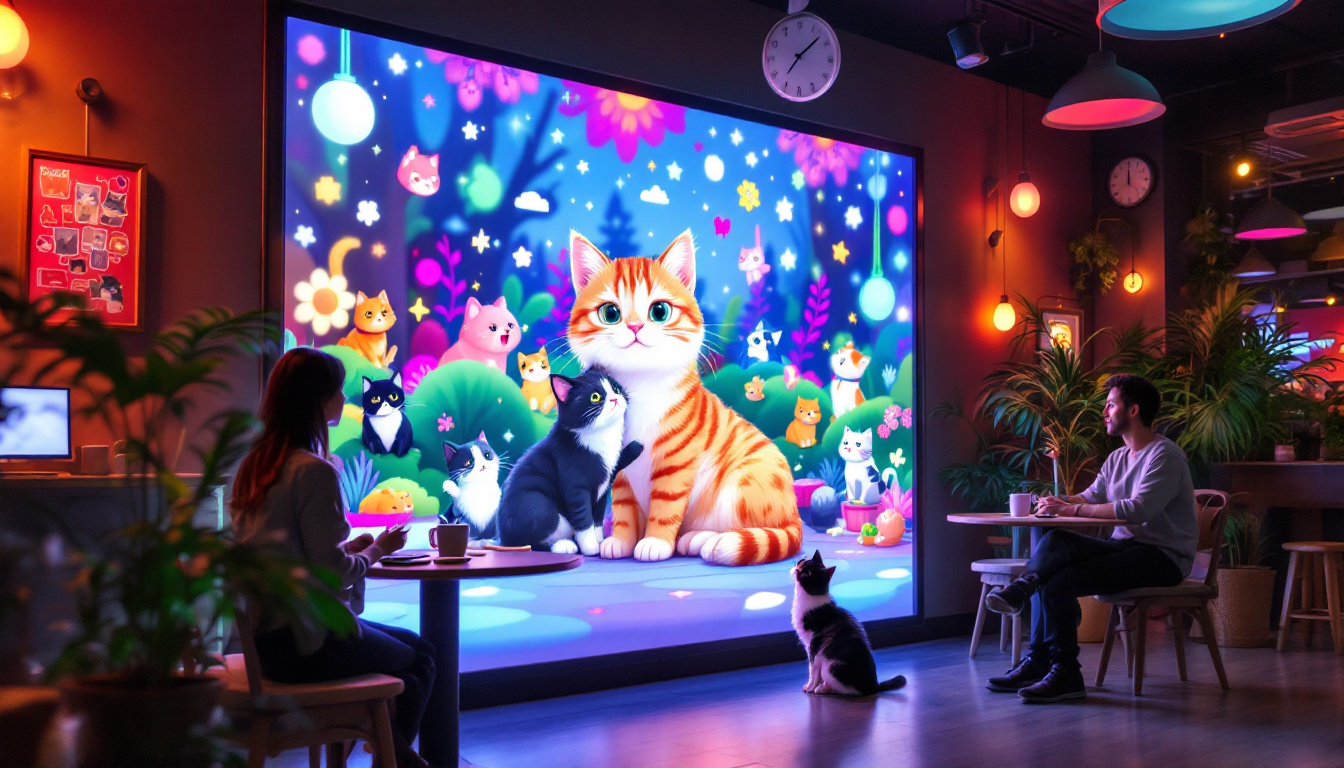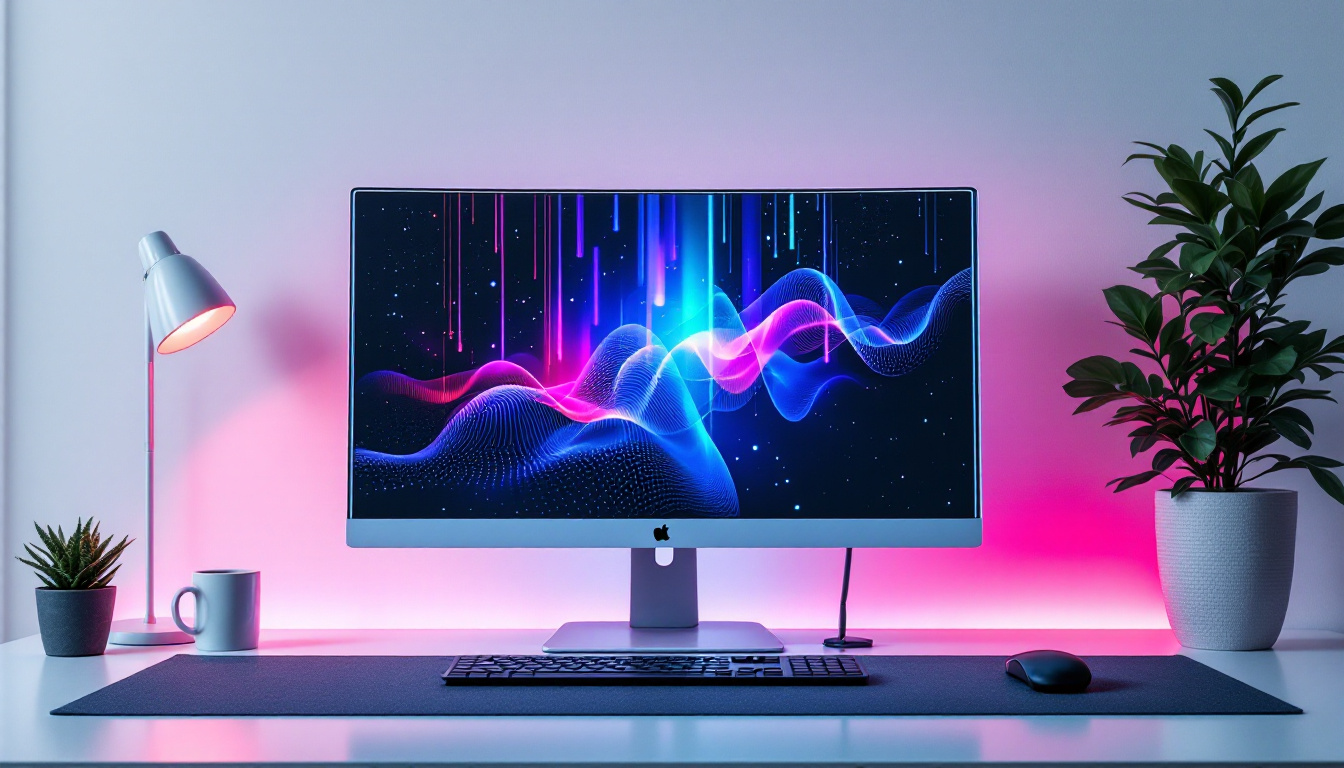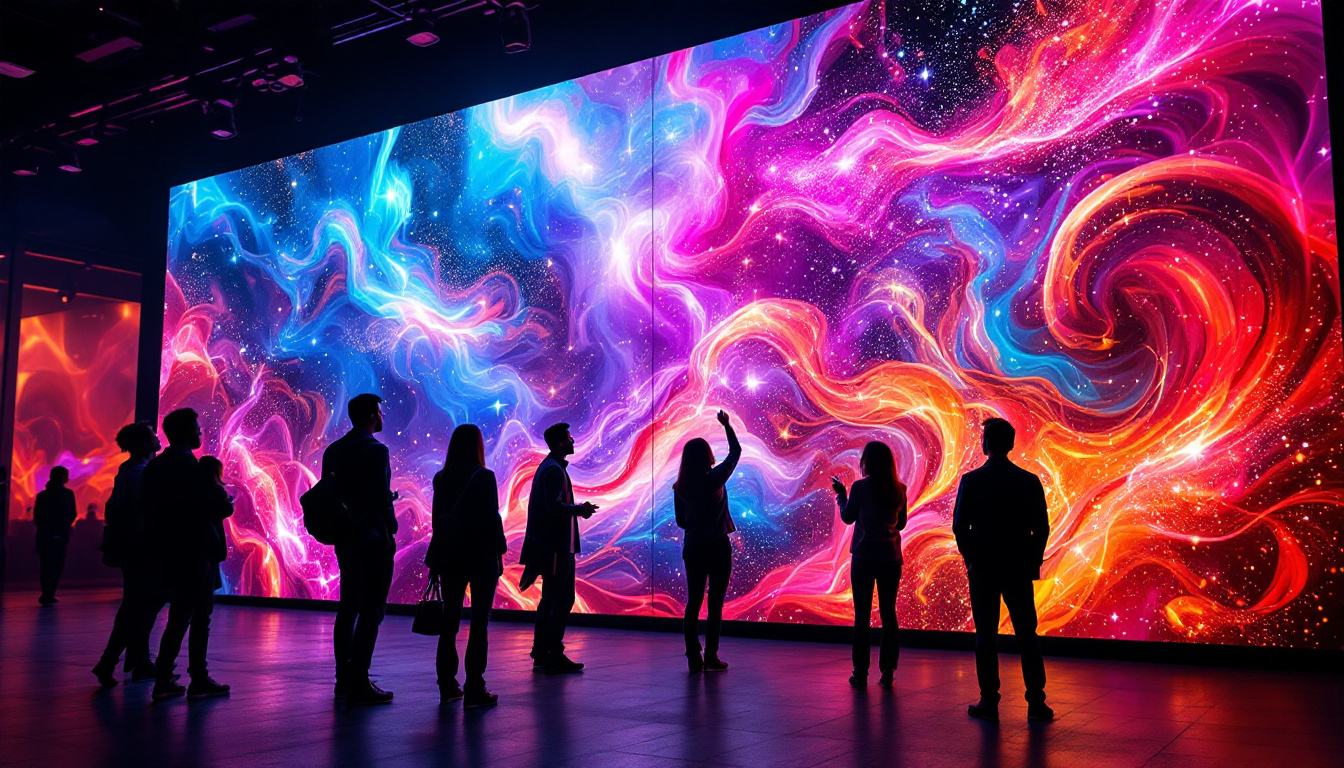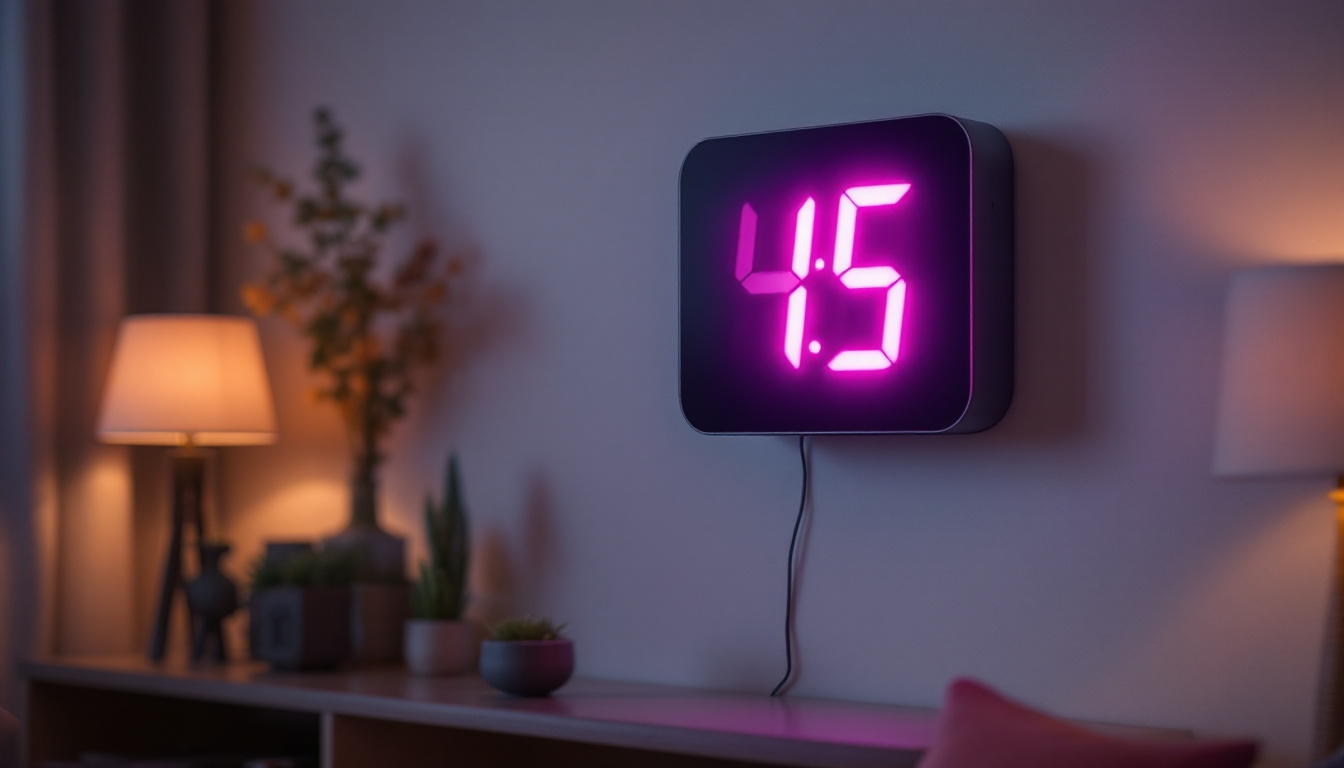In the rapidly evolving world of visual technology, LED displays have become a cornerstone for delivering vibrant, high-resolution content across a variety of platforms. From massive stadium screens to sleek digital signage in retail environments, LED displays offer unparalleled brightness, color accuracy, and versatility. But what exactly makes these displays tick? And how does the concept of “pitch” influence their performance and application?
This article dives deep into the world of LED displays, focusing on the critical role of pixel pitch. Whether you’re a business owner considering digital signage, a tech enthusiast, or a professional in the audiovisual industry, understanding pitch and its impact on LED display quality is essential. Let’s explore the technology behind LED displays, the significance of pitch, and how to choose the right LED display for your needs.
Understanding LED Display Technology
What is an LED Display?
LED stands for Light Emitting Diode, a semiconductor device that emits light when an electric current passes through it. An LED display is essentially a screen made up of thousands or millions of these tiny diodes arranged in a grid. Each diode acts as a pixel or part of a pixel, producing light and color to form images, videos, or text.
Unlike traditional LCD screens, which rely on backlighting, LED displays generate their own light, resulting in higher brightness levels and better contrast ratios. This self-illumination makes LED displays ideal for both indoor and outdoor applications, especially in environments with high ambient light. Additionally, LED displays are known for their longevity and durability, often lasting tens of thousands of hours, which translates to years of reliable service without the need for frequent replacements. This makes them a cost-effective option for businesses and organizations looking to invest in display technology.
Types of LED Displays
LED displays come in various forms, primarily categorized by their construction and intended use:
- Direct View LED (DVLED): These displays use LEDs as pixels directly visible to the viewer. They are common in large-scale outdoor billboards, stadium screens, and indoor video walls.
- LED-backlit LCD: Here, LEDs are used to backlight an LCD panel, improving brightness and energy efficiency compared to traditional CCFL backlighting. This technology is prevalent in consumer televisions and monitors.
- MicroLED: An emerging technology that uses microscopic LEDs to create displays with exceptional brightness, color accuracy, and energy efficiency. MicroLED is considered the next frontier in display technology but is currently expensive and primarily used in high-end applications.
In addition to these types, LED displays can also vary based on pixel pitch, which refers to the distance between the centers of two adjacent pixels. A smaller pixel pitch results in higher resolution and sharper images, making it suitable for close viewing distances, such as in retail environments or control rooms. Conversely, larger pixel pitches are often used for outdoor displays where viewers are typically farther away. This adaptability allows LED technology to serve a wide range of industries, from advertising and entertainment to transportation and sports.
Furthermore, advancements in LED technology have led to innovations such as flexible LED displays, which can bend and shape to fit unconventional spaces, and transparent LED displays that allow for creative installations without obstructing views. These innovations are pushing the boundaries of how LED displays can be utilized in architecture and design, creating immersive experiences that engage audiences in new and exciting ways. As the technology continues to evolve, we can expect even more applications and improvements in performance, making LED displays an integral part of our visual landscape.
What is Pixel Pitch and Why Does It Matter?
Defining Pixel Pitch
Pixel pitch refers to the distance from the center of one LED pixel to the center of the adjacent pixel, usually measured in millimeters. It is a critical specification that directly impacts the resolution and viewing experience of an LED display.
For example, a pixel pitch of 2mm means that the centers of two adjacent pixels are 2 millimeters apart. The smaller the pixel pitch, the closer the pixels are to each other, resulting in a higher pixel density and finer image detail.
How Pixel Pitch Affects Image Quality
Pixel pitch plays a vital role in determining the sharpness and clarity of the displayed image. A smaller pixel pitch allows for higher resolution within the same physical screen size, making the image appear crisper and more detailed. Conversely, a larger pixel pitch means fewer pixels per unit area, which can result in a grainier or pixelated image, especially when viewed up close.
For instance, an LED display with a 1.5mm pitch is ideal for indoor environments where viewers are close to the screen, such as conference rooms or retail stores. On the other hand, a display with a 10mm pitch might be suitable for large outdoor billboards where viewers are typically farther away.
Viewing Distance and Pixel Pitch
One of the most important considerations when selecting an LED display is the optimal viewing distance, which is closely tied to pixel pitch. A general rule of thumb is that the minimum viewing distance (in meters) should be approximately equal to the pixel pitch (in millimeters) multiplied by 1.5 to 2.
For example, a 3mm pixel pitch display is best viewed from about 4.5 to 6 meters away. If the viewer is closer than this, individual pixels may become visible, reducing image quality. Conversely, if the viewer is much farther away, a display with a smaller pixel pitch might be unnecessarily costly without noticeable benefit.
Applications of LED Displays Based on Pixel Pitch
Indoor LED Displays
Indoor LED displays typically require a small pixel pitch to ensure high resolution and image quality at close viewing distances. Common pixel pitches for indoor use range from 0.9mm to 4mm.
These displays are widely used in:
- Corporate settings: Video walls in lobbies, conference rooms, and control centers.
- Retail environments: Digital signage, promotional displays, and interactive kiosks.
- Broadcast studios: Background screens and virtual sets.
Because indoor environments usually have controlled lighting, LED displays with smaller pixel pitches can deliver stunning visuals without requiring extremely high brightness levels.
Outdoor LED Displays
Outdoor LED displays must contend with ambient sunlight, weather conditions, and longer viewing distances. Therefore, they generally have a larger pixel pitch, ranging from 6mm to 20mm or more, allowing for higher brightness and durability.
Typical outdoor applications include:
- Billboards and advertising: Large-scale digital signage along highways and city streets.
- Sports venues: Scoreboards and jumbotrons in stadiums.
- Public information displays: Transit stations, airports, and public squares.
Outdoor LED displays often incorporate weatherproofing, anti-glare coatings, and high refresh rates to ensure visibility and performance in diverse conditions.
Specialized LED Display Applications
Beyond traditional indoor and outdoor uses, LED displays are increasingly finding roles in specialized applications:
- Transparent LED displays: These allow light to pass through the screen, making them ideal for storefront windows and architectural installations.
- Flexible LED displays: Designed to curve or bend, these displays are used in creative installations and dynamic stage designs.
- Wearable LED displays: Small-scale, high-resolution displays integrated into clothing or accessories for advertising and entertainment.
Each of these applications requires careful consideration of pixel pitch to balance image quality, transparency, flexibility, and power consumption.
Choosing the Right LED Display: Factors to Consider
Resolution and Screen Size
The resolution of an LED display is determined by the number of pixels horizontally and vertically, which is influenced by pixel pitch and screen size. For a fixed screen size, decreasing pixel pitch increases resolution.
When selecting a display, consider the content you plan to show. High-definition video and detailed graphics require higher resolution, which means a smaller pixel pitch. Conversely, simple text or basic images may not need such fine detail.
Viewing Environment and Distance
As discussed, the environment and typical viewing distance are paramount. Indoor environments with close viewers demand smaller pixel pitches, while outdoor or large venue displays benefit from larger pitches optimized for distance viewing.
Ambient lighting also affects brightness requirements. Outdoor displays need higher brightness levels (often exceeding 5,000 nits) to remain visible in direct sunlight, while indoor displays typically operate at 800 to 1,500 nits.
Budget and Maintenance
Smaller pixel pitch LED displays tend to be more expensive due to the higher density of LEDs and more complex manufacturing processes. Additionally, maintenance costs can vary based on the display’s location, size, and technology.
It’s important to balance upfront costs with long-term value. Investing in a high-quality LED display with appropriate pixel pitch can reduce maintenance needs and improve viewer engagement, ultimately providing better ROI.
Refresh Rate and Color Accuracy
Refresh rate—the number of times per second the display updates its image—is crucial for smooth video playback and reducing flicker, especially in broadcast and live event settings. Higher refresh rates (above 3,000 Hz) are preferred for professional applications.
Color accuracy and uniformity also vary by LED technology and quality. Premium LED modules offer better color calibration and consistency, enhancing the overall visual experience.
The Future of LED Displays and Pixel Pitch
Trends in Pixel Pitch Reduction
Technological advancements continue to push the boundaries of pixel pitch. Recent innovations have enabled indoor LED displays with pixel pitches as low as 0.7mm, rivaling the resolution of traditional LCD and OLED screens.
This trend opens new possibilities for applications requiring ultra-high resolution, such as medical imaging, control rooms, and immersive digital art installations. As manufacturing techniques improve and costs decrease, ultra-fine pitch LED displays are becoming more accessible.
Integration with Smart Technologies
Modern LED displays are increasingly integrated with smart control systems, enabling remote management, dynamic content updates, and real-time analytics. This integration enhances the functionality and flexibility of LED signage, making it easier to tailor content to specific audiences and environments.
Sustainability and Energy Efficiency
Energy consumption is a growing concern in display technology. Advances in LED efficiency, combined with intelligent brightness control and power management, are helping reduce the environmental impact of large-scale LED installations.
Future developments may also focus on recyclable materials and modular designs that simplify upgrades and repairs, further promoting sustainability in the LED display industry.
Conclusion
LED displays have transformed the way information and entertainment are delivered across the globe. Understanding pixel pitch is fundamental to selecting the right display for any application, ensuring optimal image quality, viewer experience, and cost-effectiveness.
Whether deploying a small indoor video wall or a massive outdoor billboard, considering pixel pitch alongside factors such as viewing distance, environment, and content type will guide you to the best LED display solution. With continuous advancements in technology, the future of LED displays promises even greater clarity, flexibility, and interactivity, making them an indispensable tool in today’s visual communication landscape.
Discover LumenMatrix’s Advanced LED Solutions
Ready to elevate your visual communication with the latest in LED technology? LumenMatrix is at the forefront of innovation, offering a diverse range of LED display solutions tailored to your needs. From vibrant Indoor and Outdoor LED Wall Displays to dynamic Vehicle and Sports LED Displays, our products are designed to captivate and engage. Experience the future of digital signage with our Custom, All-in-One, and Transparent LED Displays. Check out LumenMatrix LED Display Solutions today and transform your space into a mesmerizing visual experience.



